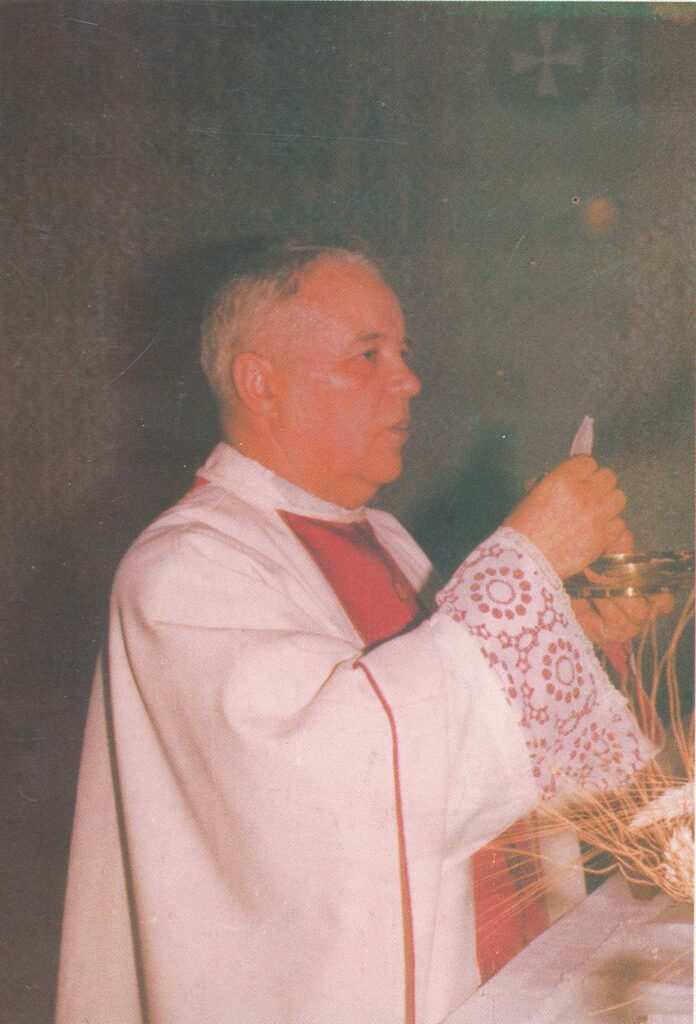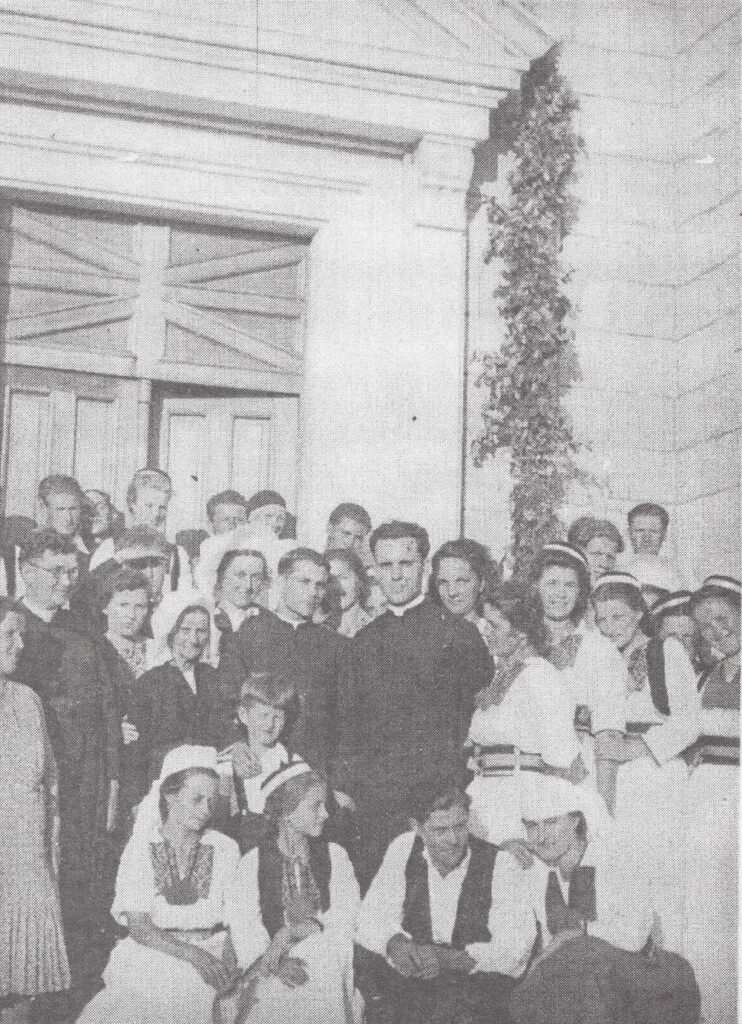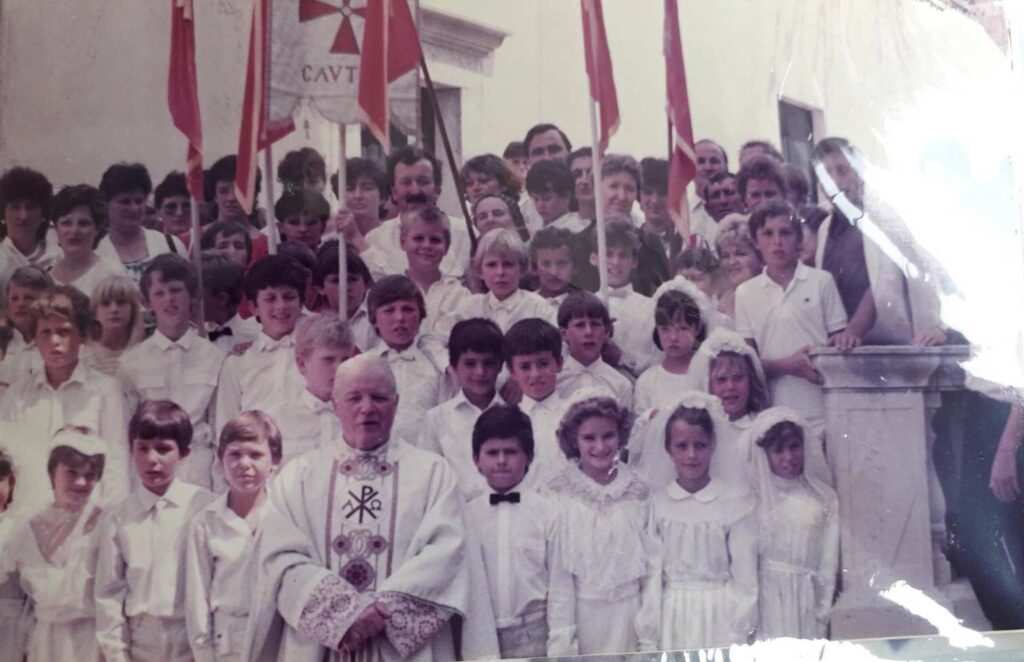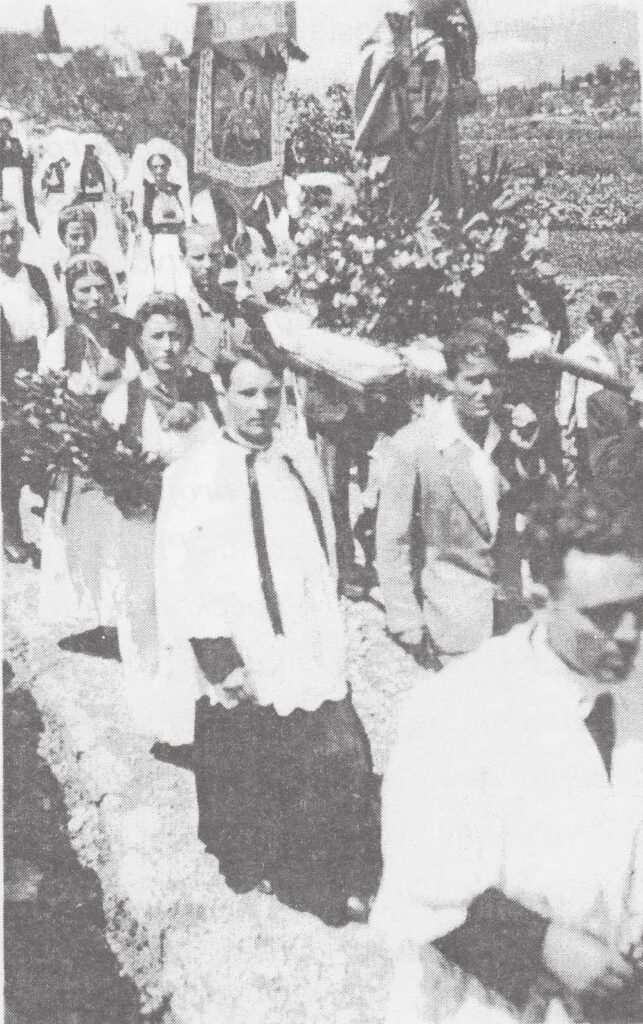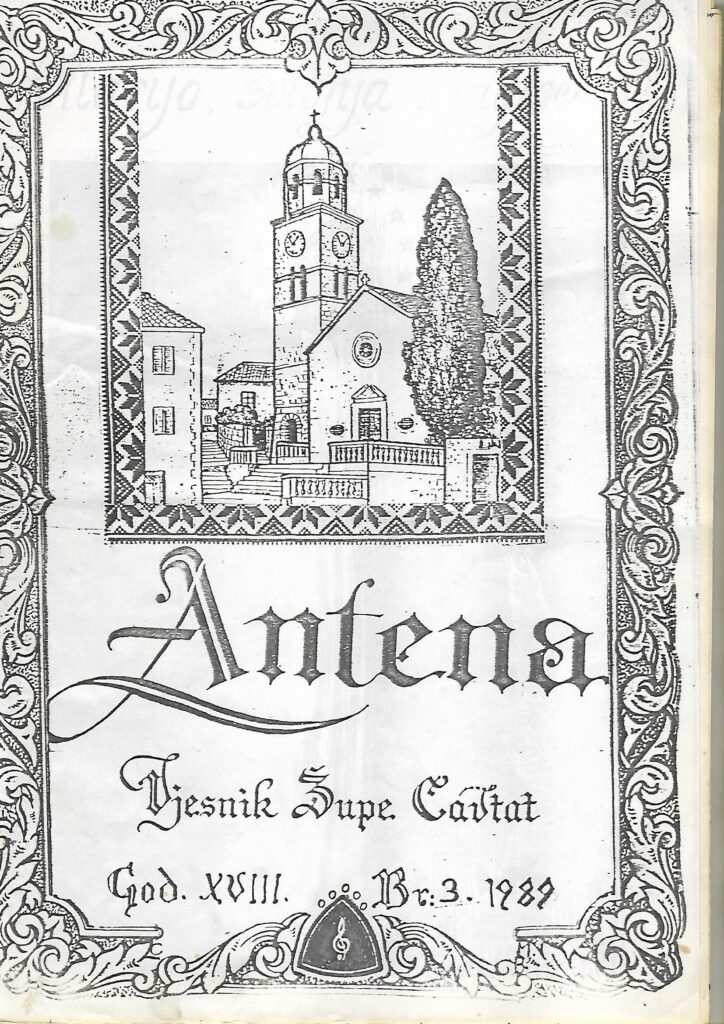Until the Second World War, the Konavle people had a positive attitude towards priesthood, viewing it primarily as an opportunity to educate children from large families, as well as a commendable spiritual vocation. Local priests could perform their service not only in Konavle, but also within their local diocese and beyond.
The intertwined familial and social aspects of a priest’s service in their native region were sometimes helpful, while at other times they would prove to be a distraction in carrying out such a noble vocation. The Reverend Father Mato Bogišić serves as a positive example of a priest serving in such circumstances; to this day, he is fondly remembered by all elderly locals as an unforgettable participant as well as organizer of social and cultural events and activities in the Cavtat community.
Mato Bogišić was born in Dubravka on 2nd September 1916. His father Niko fathered ten children in two marriages. Mato was one of four children from his father’s second marriage, the one to Luce Puljić. He attended primary school in his native village and was an excellent pupil. As a child, he loved to pretend play priest and “hold mass”. Since he was a good pupil, his parents considered sending him to a vocational school; however, the conversation between young Mato and the then parish priest, Vice Vodopić, which took place in 1929, determined his further path. What followed was an entrance exam and subsequently successful schooling at the Dubrovnik seminary. From that period, Bogišić recorded a few anecdotes concerning his friendship with a fellow seminarian Marko Herendija, who would later become a priest in his home parish, as well as certain less pleasant experiences: `During a break in the seminary classroom, I accidentally cut an electrical wire and caused a short circuit in the entire building, and when it became known the steward angrily drove me home, to leave the seminary. I hid mostly in the chapel, where I prayed. After some time, he finally forgave me.‘
In 1937, he enrolled on the Central Diocesan Theological Seminary in Split in order to pursue further education. He was ordained subdeacon and deacon in the Cathedral of Saint Domnius, and ordained a priest on 15th June 1941 in the St. Nicholas Church in Čilipi, along with his friends Marko Herendija and Marko Bošković. Reverend Mato Bogišić held his first mass in the St. Nicholas Church in his native parish of Dubravka. He noted these events in his autobiography, The Gallery of My Contemporaries, whose manuscript is kept in the archives of the Cavtat parish church:
`On a sunny day, I left my home in a chasuble, accompanied by relatives, priests and a large number of the faithful, going towards the St. Nicholas Church; the path leading to the church was sprinkled with flowers and greenery. Shortly before arriving at the church, I was greeted with enthusiastic words by the then dean of the Cavtat parish, Reverend Ivo Dagonig, a little girl by the name of Luce Glavinić, who gave an appropriate speech, and finally the pastor, Don Miho Lajoš. What followed was a mass in Latin, and the sermon, which moved everyone present, was given by Reverend Luka Antunović.‘
Since 1st August 1941, Reverend Mato Bogišić had been in charge of the autonomous chaplaincy of Vitaljina; later, he also became the parish priest in Pločice. In the decades following the end of World War II, the Catholic Church in Croatia endured many hardships, which are best illustrated by the assassination attempt on Reverend Mato, of which he wrote:
`On 27th October 1946, the celebration of the Feast of Christ the King, I was returning alone from Vitaljina to Pločice on horseback after having served my first mass. At the turn of the road leading to Molunat on the east side of the Račevo field, I was attacked by an ambush criminal, who was shooting a pistol. The horse was shot and died on the spot, while I fell; thank God, I was unharmed.‘
After that unfortunate event, he spent some time outside the parish; however, the harassment continued upon his return. He was called to the Majevica Military Construction Company in Mostar and submitted to further humiliations. Fortunately, none of this broke his cheerful spirit. Following the death of Reverend Ivo Dagonig, he was appointed parish priest and dean of the Cavtat parish, where he was well received by the faithful, especially because he maintained the old tradition of church singing and customs related to the feast of Easter.
He maintained the cultural activities in Cavtat, and he was especially pleased to work with young people and children. He founded a children’s church choir and organized amateur theatre performances and concerts. He showed biblical films and cartoons to children who would happily attend Sunday school. An increasing number of children became altar servers, which in turn resulted in the establishment of the Cavtat Altar Servers Association within the parish. He organized raffles, social gatherings, and excursions. Those who used to participate in these church activities have fond memories of those times. Moreover, Reverend Mato Bogišić was responsible for the launch of the parish newspaper Antena, which was published from 1973 to 1991. It was a seemingly modest, but extremely valuable bulletin, which provided weekly articles on liturgical chronicles, church programs, the history of Konavle parishes, the natural and cultural heritage of Konavle, as well as about contemporary theological thought. A total of 111 issues of the aforementioned newspaper were published.
Reverend Mato Bogišić was truly a great man. This was confirmed by his custody of Nikola Bogišić, a child whom he adopted, rescuing him from a difficult life at the Home for Abandoned Children. Reverend Mato gave the boy an opportunity to pursue education and took care of him with the help of his sister Jele, who had helped Reverend Mato with household chores since 1941.
The Reverend Father Mato Bogišić passed away on 18th April 2003.
